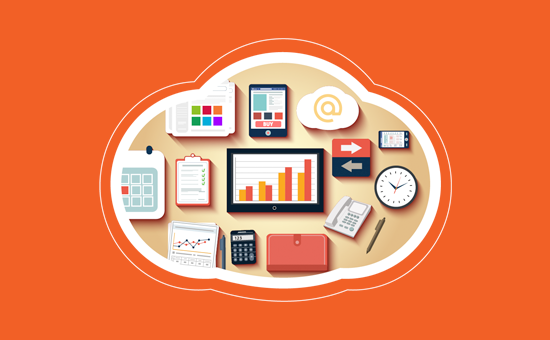Top 10 Ways To Reduce Your Website Bounce Rate
The bounce rate is the number of visitors who come to your website and leave before visiting any other pages. A higher bounce rate means that you were unsuccessful in persuading the consumer to stay and respond to your call to action.
A visitor can exit your site by pressing on a connection to another website, leaving your site by pressing the back button, closing the open window/tab, entering a new URL, or waiting for a session timeout.
People aren’t surfing your website if your bounce rate is high. They simply arrive on a page and leave without exploring the rest of your web. If you have a new server, having a high bounce rate is appropriate. If you have a multi-page website, a high bounce rate is something to be concerned about.
Assume you have a blog. When people come to your website, you want them to read more than one story. Similarly, if you had a business website, you’d want people to look past the website and see all of your goods or services.
In short, it’s great when visitors want to explore your website, and a high bounce rate indicates that this isn’t the case.
The top 10 ways to reduce your website bounce rate are:
- Improve the conversion rate of your web pages
You want to turn your tourists into clients, but it’s difficult to do if they leave after just looking at one page. The more cluttered, hazy, and perplexing your website is, the much more difficult it will be for tourists to navigate it and act immediately you desire.
- Improve the user’s overall experience
The overall impression of a user when communicating with your website is referred to as user experience. A good user experience occurs when a website is not easy to navigate but also appealing to the eye. The first step in the right direction is to create an accessible website that looks fantastic on all platforms and computers. Keep a close eye on how the customers act and what affects their choices.
There are numerous other suggestions in this article that all come under the category of user experience. Remember that the user experience is the overwhelming sense that a user has while using your website because everything is a part of it.
- Reduce the time it takes for a page to load
Many advertisers believe that if their bounce rate is high, the problem must be with the content of a page – when, in reality, serious issues can occur before a user even has a chance to read it.
Taking an eternity to load is arguably the worst issue a website can have. After all, it doesn’t care how positive or negative a page’s content is if a user can’t follow (or even see) it, and 47% of users expect a web page to load in two seconds or less, rendering on-page automation critical to lowering the download speed.
- Smart Formatting Makes the Content More Accessible
Have you ever gone to a blog post or a website only to be greeted by a massive, daunting wall of text? If that’s the case, you’re probably aware of how upsetting this can be for readers. Even if your material is highly valuable and entirely original, if your readers are put off by the prospect of reading a blog post that is as dense as War and Peace or Les Misérables, it won’t matter. One of the most effective ways to lower your conversion rates is to design your websites to be as inviting and open as possible. The less “stuff” a tourist has to do to get what they want, the longer they are likely to stay.
- Easy Navigation
Visitors should be able to navigate easily and without difficulty. When a user visits a website, they need to know where the content they’re searching for can be found.
They would most likely leave the site if it is not simple and laid out in an intuitive navigation.
- Concentrate on a Fantastic Design
A good website design is user-friendly and establishes confidence.
Increased sales. Happier clients. With CallRail, you will finally demonstrate the worth of your marketing efforts. There will be no more “what ifs.” All that matters are the outcomes.
Visitors would not spend much time on a website that is difficult to navigate or that they do not trust.
Start with a beautiful concept that is not only visually attractive, but also practical, intuitive, and simple to manage.
- Mixed-content alerts on HTTPS should be fixed.
When a site that is expected to be operating over HTTPS is also providing resources over HTTP, mixed-content alerts appear. This is a major issue that we see all the time on the internet, particularly now that people are moving to HTTPS to take advantage of the SEO result employees and the advantages of HTTP/2. A few months ago, we posted this to Search Engine Roundtable, a huge website. It turned out that the WordPress Disqus plugin was only displaying ads over HTTP.
Website owners should test their pages in all browsers to make sure they don’t get HTTPS mixed-content alerts.
- Don’t use advertisements
The age-old debate over whether or not to use advertisements on your website. In 2013, 70% of people considered meaningless popups to be annoyances. However, popups have been shown to significantly increase conversions and list registrations on certain websites. Using a popup on his blog, Neil Patel saw a 46 percent rise in signups. Bear in mind, however, that if the popups annoy people, they will increase your bounce rate. As a result, use them with caution.
If you’re going to use popups, we suggest setting a timer for them so they don’t appear right after anyone visits your site, and possibly removing them from your homepage entirely.
- Keep an eye on the size of the search bar.
Visitors are unable to locate what they are searching for, which contributes to a high eCommerce bounce rate. To address this problem, you should make your search bar as visible as possible. A search box should be 27 characters wide, as per a Jakob Nielsen study. Search bars, on the other hand, are usually only 18 characters wide. Even though you can type large footprint in short boxes, only a component of the question will be available at a time. This makes it impossible to edit or revisit the query.
- Select the Correct Audience
You can make all the improvements you want, but your conversion rates won’t change unless you get the right people to visit your site. It’s only normal that tourists won’t want to explore your site if you target the wrong demographic. Here are a few ways to make sure you’re focusing your efforts on the right people:
Create a consumer profile that is perfect for you. It’s important to figure out who your perfect client is. The more specific your advertising is, the more accurate a consumer profile you make. Select the most efficient marketing platforms. You should concentrate on the marketing outlets that your target audience is exposed to regularly.












